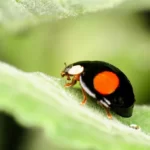Evergreen trees are a beloved addition to landscapes for their year-round greenery. To keep them vibrant and healthy, choosing the right fertilizer is crucial. One commonly encountered option is the 10-10-10 fertilizer. In this guide, we’ll explore whether 10-10-10 fertilizer is a good choice for evergreens. We’ll delve into the meaning of those numbers, understand the advantages it offers, and equip you with the knowledge needed to make informed decisions for your evergreen trees.
Numbers
The numbers on a bag of fertilizer, such as 10-10-10, represent the ratio of three primary nutrients it contains: nitrogen (N), phosphorus (P), and potassium (K). In the case of 10-10-10, each of these essential nutrients is present at 10%. Nitrogen promotes lush foliage and overall growth. Phosphorus aids in root development and flowering. Potassium contributes to disease resistance and overall plant health. The balanced 10-10-10 ratio implies that these nutrients are provided in equal amounts, making it a well-rounded fertilizer choice.
Advantages of 10-10-10 Fertilizer
Using 10-10-10 fertilizer for evergreens offers several advantages. Firstly, it’s a versatile choice suitable for various plant types, including evergreen trees. The balanced nutrient ratio supports both foliage and root development, promoting overall tree health. Additionally, this type of fertilizer is easy to find and often cost-effective. Its simplicity in use makes it a good choice for beginners in gardening. Furthermore, it can be applied during the growing season and is readily available at many garden centers, making it a convenient option for evergreen tree care.
Considerations for Evergreens
When deciding if 10-10-10 fertilizer is suitable for your evergreen trees, it’s essential to consider the specific needs of these remarkable plants. Evergreens, as their name suggests, retain their foliage year-round, which means they have a continuous demand for nutrients. They benefit from a balanced fertilizer like 10-10-10 because it provides a steady supply of the essential nutrients they require for both foliage growth and root development. Additionally, evergreens tend to have shallow roots, so choosing a well-balanced fertilizer like 10-10-10 helps avoid nutrient imbalances that can occur with other fertilizers.
Application Guidelines
Proper application of 10-10-10 fertilizer is key to ensuring its effectiveness for evergreens. To apply this fertilizer, start by calculating the appropriate amount based on the size and age of your evergreen trees. Apply the fertilizer evenly around the drip line of the tree, which is the area directly under the outermost branches. Water thoroughly after application to help the nutrients penetrate the soil. It’s advisable to fertilize evergreens during the growing season, typically in the early spring or late fall. Avoid over-fertilizing, as this can lead to nutrient imbalances or potential harm to your trees.
Alternatives and Specialized Fertilizers
While 10-10-10 fertilizer is a suitable choice for many evergreen trees, it’s worth noting that there are alternative fertilizers available, as well as specialized formulations for specific situations. Slow-release fertilizers are an excellent option for those who prefer a set-and-forget approach, as they gradually release nutrients over time. Additionally, there are fertilizers formulated specifically for acid-loving evergreens like rhododendrons and azaleas, which have unique nutrient requirements. Assess your specific evergreen varieties and their needs to determine whether an alternative or specialized fertilizer may be a better fit for your trees.
Potential Drawbacks
While 10-10-10 fertilizer can be a suitable choice for evergreens, it’s essential to be aware of potential drawbacks. One of the main concerns is that this balanced fertilizer might not cater to the specific needs of certain evergreen varieties. Some evergreens may require higher or lower amounts of specific nutrients, such as more nitrogen for robust growth or less phosphorus for trees with mature root systems. Additionally, overusing 10-10-10 fertilizer can lead to nutrient imbalances, affecting the overall health of your evergreens. To avoid these issues, consider soil testing and tailored fertilization for your specific evergreen types.
Frequently Asked Questions
Can I use 10-10-10 fertilizer for all types of evergreens?
While it’s generally suitable for many evergreens, some varieties may have different nutrient requirements. Assess your specific evergreen types to determine the best fertilizer choice.
How often should I fertilize my evergreen trees with 10-10-10 fertilizer?
Fertilize your evergreens once or twice a year during the growing season, typically in the early spring and late fall.
Can I mix 10-10-10 fertilizer with other types of fertilizer?
Mixing fertilizers can be complex and may lead to nutrient imbalances. It’s best to use one type of fertilizer and follow application guidelines.
Are slow-release fertilizers better for evergreens than 10-10-10?
Slow-release fertilizers can be convenient and provide nutrients gradually. The choice depends on your preference and the specific needs of your evergreens.
Conclusion
In conclusion, the use of 10-10-10 fertilizer for evergreen trees is a viable option. It offers balanced nutrition, ease of use, and cost-effectiveness. However, it’s important to consider the unique needs of your evergreen varieties and the potential drawbacks associated with balanced fertilizers. Proper application and a good understanding of your evergreens will help you make the best choice for their health and vitality. Remember, healthy evergreens can bring year-round beauty to your landscape, so their care and nourishment are worth the effort.




